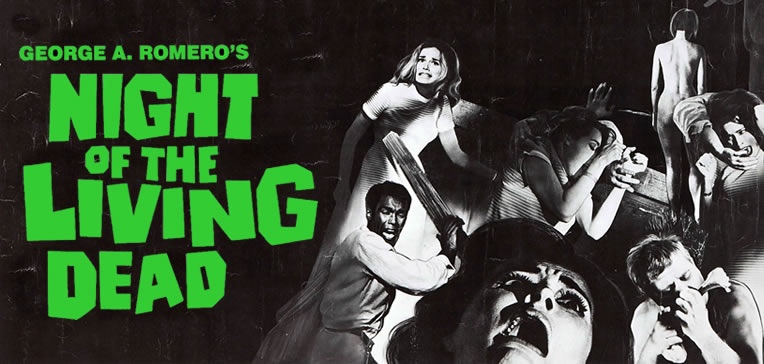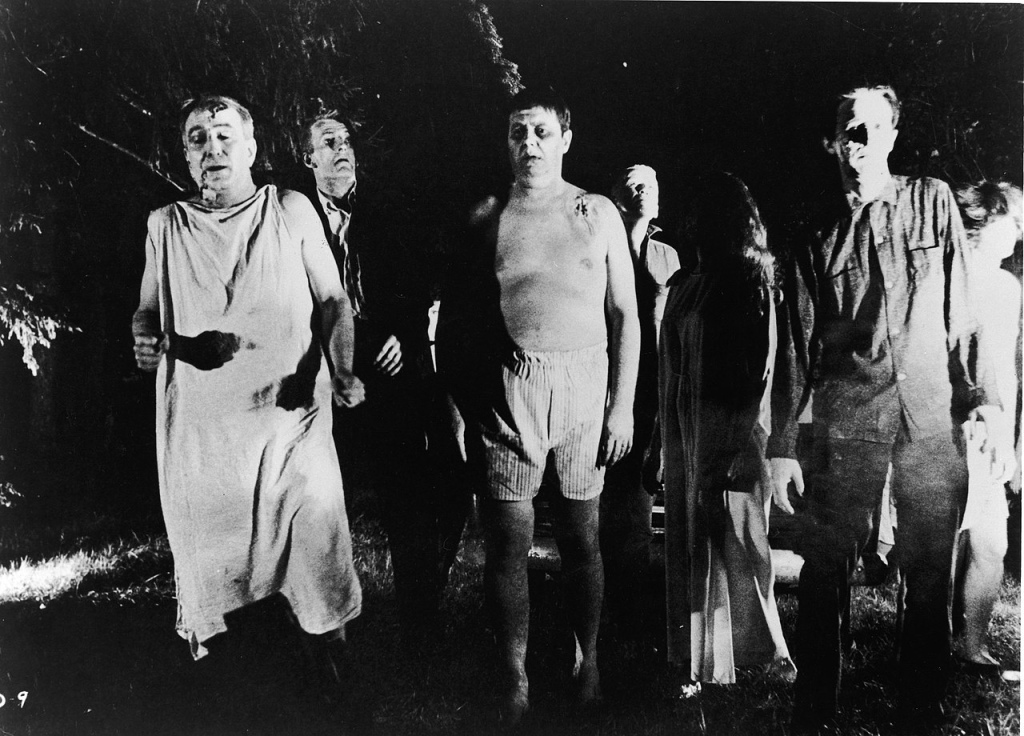Hello my friends. This week we will look at possibly the biggest leap forward in bringing the horror cinema, (and all cinema), experience to home audiences for them to own first time.
It’s a revolution that started further back than you might think, this is the birth of the video cassette recorder.
Let’s explore and welcome back ☺️
When you say to most people when was the video recording and playback system invented and first used, you would likely get an answer of the 1980’s but is that right?
We need to look back to the 1950’s and to our American friends across the pond. Television in the states had really taken off but there was two problems. The size of the country and the different time zones.
Back in the 1950’s the only way to reproduce a live broadcast in one time zone and to be able to re-broadcast that in a different time zone at an appropriate hour to suit that TV audience was to use a piece of technology called a “Kinescope”

The “kinescope” or “telerecording system” as it was know in the U.K. had been used since the 1940’s. Very simply, it used a motion picture film camera fixed and pointed at a TV screen and it filmed a live broadcast as it happened and recorded that broadcast.
It was the only way these live transmissions could be saved, sold and re-broadcast during this time. Unfortunately, the recording quality was at a very low standard.
It would take a recorded film canister from these systems hours to be processed and developed to make it watchable and then it could be shipped or re-broadcast.
The cost, time and quality started to become factors as the ownership of televisions in the home flourished in the 1950’s, especially in the American market.
It had got to a point that most of the major TV networks elected to just transmit their broadcasts live, meaning you had to up fairly early or fairly late according to where you lived and where the broadcast originated from.
This was frustrating for the viewing audience and of course these early broadcasts would not be recorded in any way and they are now tragically lost to time.
A better way had to be found and the race was on to develop a system that could cope with the demands of this fledgling industry. The answer was in the magnetic tape system or video.
This had become a sort of holy grail for the many audiovisual companies of the time but 1956 a company called Ampex released what is widely recognised as the first video tape recorder and play back system called the VRX-1000.

This ground breaking and huge piece of video equipment came with an equally colossal price tag of $50,000 in 1956 which adjusted into today’s money would be $564,386.03, (around £461,099.72).
This was the key to revolutionising the way that television was not only stored, recorded and broadcast, but in how it was made entirely.
Gone were the days of having to rely on live studio productions without error from the performers, the technicians and the technology that made it.
Now, productions could be shot and recorded ahead of time with whole blocks of new television series being made days, weeks or months in advance and more importantly this was cost effective.
Shown above is a wonderful example of this new technology being used for the first time by the BBC in 1958. This is their flagship programme “Panaroma” presented by the legendary Richard Dimbleby.
To the viewing audience it was nothing short of a technological wonder but little did they know the importance of this ground breaking innovation. It would change how people watched television and films for decades to come.
As the years rolled on, better and more sophisticated electronics where invented. Leaps forward in imaging technology and of course the inevitable miniaturisation of circuitry, meant that the cost of these systems started to fall.
Video equipment became common place within television studios across the world and more importantly it became the industry standard. But it will still not in the hands of the everyday consumer.
There was various attempts to bring a “home video unit” to the domestic market over the years. Shown below is an example of this:

This Philips video system from 1970 was created for television stations primarily, but they also sold it to consumers. Looks more like something out of Cold War spy novel doesn’t it.
These kinds of very early units where not user friendly and they’re more akin to reel to reel audio equipment. They were mostly aimed at the electronics enthusiast with deep pockets.
For home video units to flourish, they had to become easier to use, simplified in their design and most crucially, standardised in the recording media they used.
The design language of the already established audio tape players would be used with a self contained removable cassette media becoming the new way forward for the “Video Home System” or “VHS” which would be created in the 1970’s.
This is where l would get introduced to the world of video as a child as first mentioned in my blog post from April this year titled, “The Sloane Ranger”
To coin a video phrase, let’s rewind a moment and look at what was happening in the world of horror films during these changing times.
Things had moved on significantly from those early decades that l mentioned last week with films, television shows, music and printed media becoming more reflective of the turbulent world we lived in.
Horror movies started to get more graphic in their depictions of what was happening and advancements in practical special effects had brought gore and bloody violence to the screen in a way audiences had never seen before.
Major motion picture companies had virtually sidelined both science-fiction and horror films as “B movies” from the late 1950’s onwards.
They didn’t have the gravitas of such genres as the biblical historical epics, war films, action adventures, musicals, comedy and thrillers films that dominated the Hollywood landscape and where all highly romanticised and not indicative of the current zeitgeist.
No self respecting A list actor or director would want to be connected to horror or science fiction and they became the so called “B movies” with some very rare exceptions to that rule.
The film making industry was stuck in its ways where the major studios would only make a certain amount of the “A list” or prestigious films using highly recognisable actors per year according to financial restraints.
Those movies would then have exceptionally long runs at the cinema to recoup costs and after a time make a profit on those productions. Eventually they would make their way to domestic broadcasts after they where sold to television networks but usually years later.
As we got into the late 1960’s the movie going audiences shifted in their desires and age group. These younger film goers wanted something more challenging, more reflective of the times and horror films started to make a resurgence.
Let’s round up the blog entry this week and take a look at one of my favourite horror movies from 1960’s which is fine example of how tastes where changing. It’s the gold standard in zombie horror, “Night of the living dead” from 1968 which became a pivotal year.

This purposely shot in black and white zombie horror masterpiece directed by George A. Romero, absolutely captivated the public’s imagination with its guerrilla style of camera work and documentary feel.
With it’s economical shooting budget, there was a smart use of a central location of a seemingly abandoned farmhouse which our cast of highly believable characters are forced to band together in a fight for their lives to defend it and survive.

There is a clever use of TV news and radio bulletins that are peppered throughout the film to tell a wider story of what’s happening to the audience but also to our cast as the broadcasts filter through to the house they are caught up in.

It’s so much more than a horror film, with a tight and often controversial script that looks at racism, sexism, stereotypes and the basic breaking down in morality and humanity in a life and death struggle.
With gruesome practical effects, multiple death scenes, zombies and a shocking conclusion, it was a landmark in what a horror movie could do with little to no budget but with highly creative unknown talent behind and in front of the camera.
This film had a budget of just a little under $130,000 with a box office takings of over $30,000,000 which was 250 times more than it cost to make. It was a smash hit with thrilled audiences and its financial backers.
This film broke all the rules, not only for its graphic content, story and the way it was shot but how it was made. It circumvented the studio system and shook the established order of the film making industry.
In that same year of 1968 and months after “Night of the living dead” had been released, the first major change to the film classification system took place in America.
The MPA, (motion picture association), implemented new age rating categories that films and television shows would be bracketed into according to the severity of their content.
Although it was a voluntary rating system, film makers could still continue to make content in a “unrated” version that could be seen by audiences but this came with its problems.
Unfortunately, most of the new wave of horror films of this time fell into this unrated category and subsequently most cinemas would bow to pressure groups and would refuse to show unrated content.
This meant that without heavy edits, people would never see these films as most directors were fiercely protective of their work and would refuse to cut any footage.
There were independent cinemas that would show unrated films, but these were far and few between, and the runs of these particular films would be extremely limited and not be commercially viable.
It was a silk veiled type of censorship, which once again benefited the conventional film making industry that would happily conform to these “voluntary guidelines”.
But…Pandora’s box had been opened and these new style of horror films were not going to go away as audiences wanted to have their preconceptions challenged in ways that were unthinkable years before.
The 1970’s and 1980’s were about to take that to a whole different level and the new video technology would play the most critical part in that as we dive into “Video Nasties” for our next blog entry😳
As always, thank you so much for reading today’s entry, your likes, comments, shares and general interest in the blog.
Let’s explore together again next week ☺️
Leave a comment